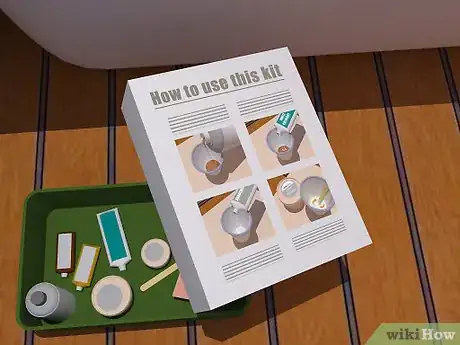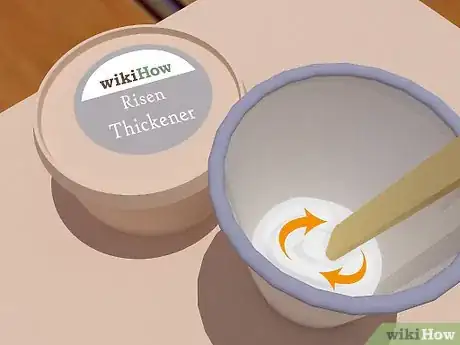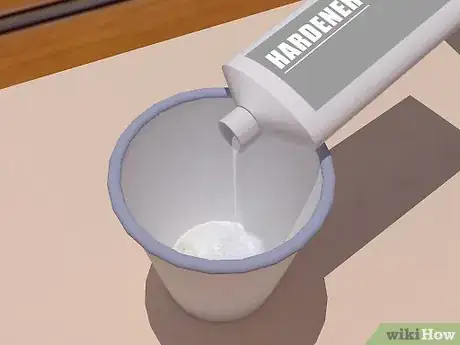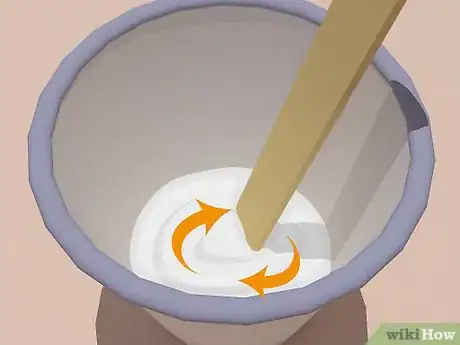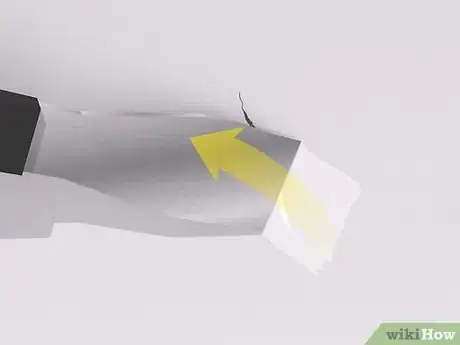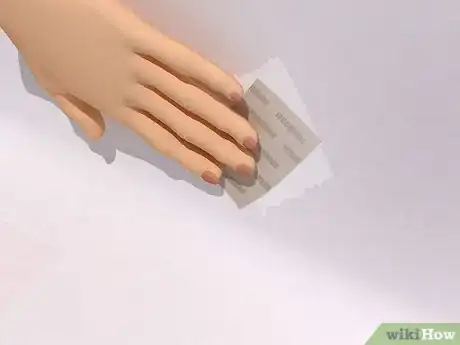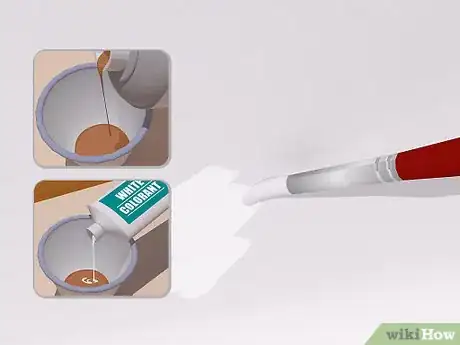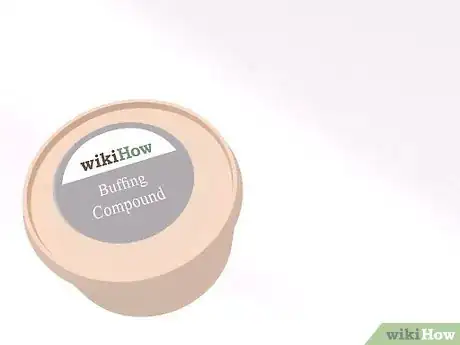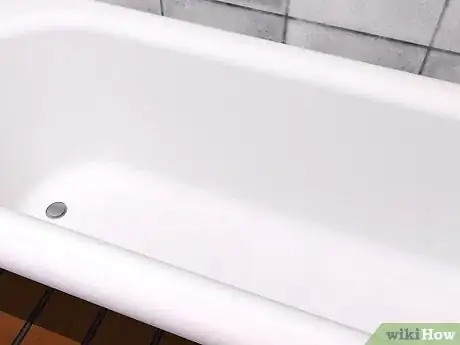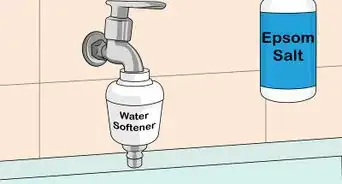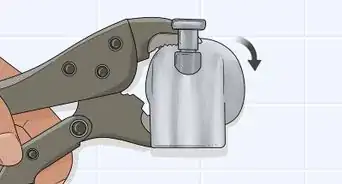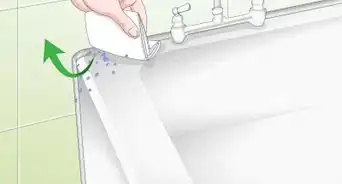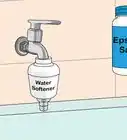This article was co-authored by Ryaan Tuttle and by wikiHow staff writer, Christopher M. Osborne, PhD. Ryaan Tuttle is a Home Improvement Specialist and the CEO of Best Handyman, Inc. in Boston, Massachusetts. With over 17 years of experience, he specializes in building home service businesses, focusing on creating scalable and efficient brands. With the help of his global team, the companies have achieved over 10+ million in sales and received recognition through magazine features, and enjoy partnerships with wikiHow and Jobber field service software. Boston Magazine and LocalBest.com have named Best Handyman Boston the Best Handyman in Boston. Ryaan holds Construction Supervisor and Home Improvement Contractor Licenses.
wikiHow marks an article as reader-approved once it receives enough positive feedback. This article received 11 testimonials and 100% of readers who voted found it helpful, earning it our reader-approved status.
This article has been viewed 932,013 times.
Fiberglass showers and bathtubs are durable, easily maintained, and attractive fixtures, but they may still be accidentally damaged. Fortunately for homeowners, there are inexpensive kits available that can be used to make repairs if this happens.
Steps
-
1Purchase a suitable kit for your shower (or bathtub). You should make sure your shower or bathtub is fiberglass before going shopping, as these instructions will not give good results on cast iron or other types of fixtures.
- Make sure your shower is fiberglass by tapping it with your knuckle or a wooden spoon or similar item which will not damage the finish. A fiberglass unit will have a soft, hollow, non-metallic sound, and depending on where you tap it, may even seem flexible.
- Choose the appropriate color for the kit you will purchase. Most kits come with colorants (tinting products) to change the color of the product to match common colored fixtures, such as white, off white, or almond.
- Make sure the kit you buy comes complete with everything you need, or purchase these materials and tools separately. The following is a list of what your kit may contain:
- Polyester resin
- Hardener (catalyst to harden the resin)
- Fiberglass mesh or mat (for large or structural repairs)
- Colorants
- Sandpaper in assorted grits, from 80 grit (coarse) to 400 or 440 grit (very fine)
- Thickener (to stiffen the resin for vertical applications)
- Protective gloves resistant to the chemicals included in the kit
- A mixing container and stirring tool
-
2Clean the area to be repaired.[1] Cut any jagged or protruding glass fibers around the damaged area, sand it lightly with a medium grit sandpaper to remove wax, oil, soap scum, or other surface contaminants, and rinse with acetone or another solvent to assure proper adhesion of the repair product.
- You may want to wear a Tyvek suit when working with fiberglass, especially if you're cutting it. Put on gloves and a respirator as well to protect yourself from the fiberglass.
Advertisement -
3Determine if the damaged area will require fiberglass cloth reinforcing.[2] If it does not, skip to the step describing mixing and tinting instructions. If the crack is over one fourth of an inch (1/2 cm) wide, or is actually an open hole that the resin mixture will not fill alone, cut a piece of fiberglass mesh or cloth slightly larger than the hole. For large holes or cracks, more than one layer of cloth may be needed to get good results.
-
4Read the mixing and tinting instructions of the product you have purchased.[3] Since individual products may vary, and measuring the materials you mix is essential, make sure you understand these instructions before proceeding.
-
5Place a protective material like cardboard or heavy construction paper on the surface you will mix the material on. Place the container you will mix in (usually supplied in the kit you purchased) on this surface.
-
6Measure the amount of polyester resin into the mixing container you think you will need for your repair. Most kits have mixing proportions for fractional portions of the resin provided, such as 1/4th of the volume, 1/2, etc., mixed with an equal proportion of hardener.
-
7Add the colorant from the correct tube that came with the kit. An example would be for almond, mix 5 parts white with 1 part brown, to 20 parts of resin. For basic white, use the white colorant added until the resin is thoroughly opaque. Mix these components thoroughly, and check the color against the fixture you are repairing before adding the hardener.
-
8Mix thickening material into the resin/colorant mixture until it is a desired consistency for your patch. Vertical surfaces need to be very stiff so the product does not sag, drip, or run. For horizontal repairs the material can be thinner, but it still should be stiff enough that it can be tooled smooth with the applicator.
-
9Add the hardener according to the kit's instructions. If you cannot find a workable proportion, you may have to make an educated guess as to how much you will need. Generally speaking, too much hardener will only accelerate the process, allowing less working time, and too little will delay the setting time. If you fail to add enough hardener to set the resin, however, it will remain tacky indefinitely. For a ball-park estimate, add 5 drops of hardener to each tablespoon of resin/colorant mixture.
-
10Mix the repair material thoroughly.[4] The longer you stir the material, the better the results will be, making sure that all of edges and corners are incorporated so that it hardens equally. Remember, though, that once you add the hardener, the reaction that solidifies the resin will begin, so you can only expect 10 to 15 minutes total working time before the resin becomes unusable.
-
11Using a flat tool like a putty knife or wooden tongue depressor, scoop out some of the mixture and apply it to the damaged area. If you are using fiberglass cloth for your repair, place the piece you have cut over the damage, and press it into the resin repair mixture. Make sure you spread it evenly, and to a level slightly higher than the original surface so it can be sanded down and feathered smooth when you finish. Once the repair material is applied, allow it to harden, typically about 2 hours at room temperature.[5]
-
12Sand the patch carefully, trying not to scuff the adjacent areas. If you used fiberglass cloth, you may need to trim any fibers that are protruding with a sharp utility knife before sanding. Begin with a fairly coarse grit of sandpaper, depending on how much of the patch has to be removed to make it flush with the original surface. Work your way from a coarse or medium grit to a fine, then very fine grit sandpaper, until the repair is smooth. If you need to build up the repair further, mix another application and apply it to the damaged area, then repeat the sanding.
-
13Mix another batch of resin and colorant to overlay the first patch, without the thickening agent. You can apply this with a small artist's paintbrush, or if it is a small chip or ding, even a cotton swab will do. Smooth this application as much as possible, allow it to harden, then sand it with very fine sandpaper.
-
14Buff the finished repair with the buffing compound provided in the kit to restore the gloss finish so it matches the original.
-
15Clean up the area, and admire your handiwork.
Community Q&A
Did you know you can get answers researched by wikiHow Staff?
Unlock staff-researched answers by supporting wikiHow
-
QuestionWhat causes a fiberglass tub to crack?
 wikiHow Staff EditorThis answer was written by one of our trained team of researchers who validated it for accuracy and comprehensiveness.
wikiHow Staff EditorThis answer was written by one of our trained team of researchers who validated it for accuracy and comprehensiveness.
Staff Answer wikiHow Staff EditorStaff Answer
wikiHow Staff EditorStaff Answer -
QuestionHow long will a fiberglass tub last?
 wikiHow Staff EditorThis answer was written by one of our trained team of researchers who validated it for accuracy and comprehensiveness.
wikiHow Staff EditorThis answer was written by one of our trained team of researchers who validated it for accuracy and comprehensiveness.
Staff Answer wikiHow Staff EditorStaff Answer
wikiHow Staff EditorStaff Answer -
QuestionHow do you get tough stains out of a fiberglass tub?
 wikiHow Staff EditorThis answer was written by one of our trained team of researchers who validated it for accuracy and comprehensiveness.
wikiHow Staff EditorThis answer was written by one of our trained team of researchers who validated it for accuracy and comprehensiveness.
Staff Answer wikiHow Staff EditorStaff AnswerYou need to handle stains in fiberglass tubs and showers carefully so that you don’t damage the delicate finish. Try letting the stain soak in castile soap for up to an hour, then rub the area with a soft cloth or sponge in a circular motion. Rinse the area thoroughly when you’re done. If that doesn’t work, you might be able to scrub the stain out with a baking soda paste and a soft cloth. For ultra-stubborn stains, acetone-based nail polish remover or turpentine may work. Let the solvent sit on the stain for up to an hour, then scrub the area with a soft nylon brush. Wipe it clean with a damp cloth or sponge.
wikiHow Staff EditorStaff AnswerYou need to handle stains in fiberglass tubs and showers carefully so that you don’t damage the delicate finish. Try letting the stain soak in castile soap for up to an hour, then rub the area with a soft cloth or sponge in a circular motion. Rinse the area thoroughly when you’re done. If that doesn’t work, you might be able to scrub the stain out with a baking soda paste and a soft cloth. For ultra-stubborn stains, acetone-based nail polish remover or turpentine may work. Let the solvent sit on the stain for up to an hour, then scrub the area with a soft nylon brush. Wipe it clean with a damp cloth or sponge.
Warnings
- Use rubber or plastic gloves (usually provided with the kit) when using cleaning solvents and mixing the polyester resin.⧼thumbs_response⧽
- Avoid using styrofoam cups or containers for mixing your materials. Acetone and related solvents will dissolve styrofoam and spill the solvents or resins onto your bathroom fixtures and floor.⧼thumbs_response⧽
- Make sure you have personal protection equipment (mask-respirator) and plenty of ventilation while doing this repair.⧼thumbs_response⧽
- Acetone or other solvents are highly combustible, so be sure there are no ignition sources like water heater pilot lights in the immediate area prior to beginning the repair.⧼thumbs_response⧽
Things You'll Need
- Fiberglass tub/shower repair kit described above
- Cleaning solvent, such as acetone
- Rubber or plastic gloves



